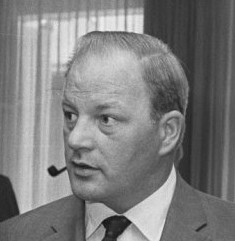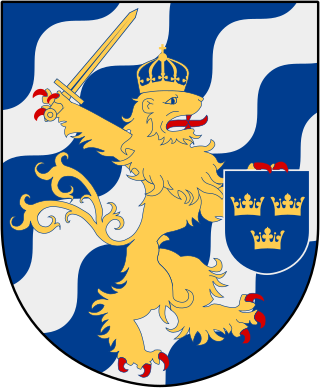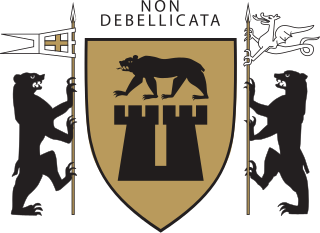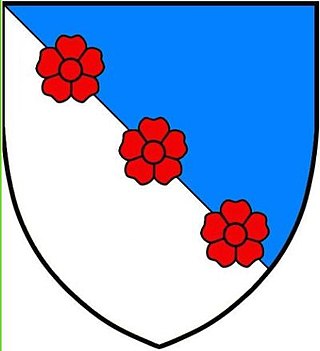Contents
| |||||
| Centuries: | |||||
|---|---|---|---|---|---|
| Decades: | |||||
| See also: | List of years in Norway | ||||
Events in the year 1496 in Norway.
| |||||
| Centuries: | |||||
|---|---|---|---|---|---|
| Decades: | |||||
| See also: | List of years in Norway | ||||
Events in the year 1496 in Norway.

The Göta älv is a river that drains lake Vänern into the Kattegat, at the city of Gothenburg, on the western coast of Sweden. It was formed at the end of the last glaciation, as an outflow channel from the Baltic Ice Lake to the Atlantic Ocean and nowadays it has the largest drainage basin in Scandinavia.

Charles VIII, contemporaneously known as Charles II and called Charles I in Norwegian context, was king of Sweden and king of Norway (1449–1450).

Ghosts is a play by the Norwegian playwright Henrik Ibsen. It was written and published in 1881, and first staged in 1882 in Chicago, Illinois, US in a production by a Danish company on tour. Like many of Ibsen's plays, Ghosts is a scathing commentary on 19th-century morality. Because of its subject matter, which includes religion, venereal disease, incest, and euthanasia, it immediately generated strong controversy and negative criticism. Since then, the play has come to be considered a "great play" that historically holds a position of "immense importance". Theater critic Maurice Valency wrote in 1963, "From the standpoint of modern tragedy Ghosts strikes off in a new direction.... Regular tragedy dealt mainly with the unhappy consequences of breaking the moral code. Ghosts, on the contrary, deals with the consequences of not breaking it."

Eric "X" was the King of Sweden between 1208 and 1216. Also known as Eric the Survivor, he was, at his accession to the throne, the only remaining son of King Canute I of Sweden and his queen. The name of his mother is not known, but may have been Cecilia.

Birger was King of Sweden from 1290 to 1318.

Alv Jakob Fostervoll was a Norwegian politician for the Labour Party. He served as Norwegian Minister of Defence and Governor of Møre og Romsdal.

The history ofGothenburg begins with the foundation of the city in 1621, although by that time people had already been living in the area for thousands of years, since the Neolithic Period, and moreover there had already been a series of earlier settlements on the lower Göta Älv, including one which also bore the name Gothenburg.
Svein Knutsson was the son of Cnut the Great, king of Denmark, Norway, and England, and his first wife Ælfgifu of Northampton, a Mercian noblewoman. In 1017 Cnut married Emma of Normandy, but there is no evidence that Ælfgifu was repudiated, and in 1030 Cnut sent her and Svein as regents to rule Norway. However, their rule was considered oppressive by the Norwegians. They imposed new taxes and harsh laws that made them unpopular and they were expelled in 1034.

The Sudreim claim was an entitlement to the throne of the Kingdom of Norway held among members of the powerful and influential House of Sudreim in the late Middle Ages.

Alv Erlingsson was a Norwegian nobleman, earl of Sarpsborg and governor of Borgarsyssel.

Alv Kjøs was a Norwegian army officer and politician for the Conservative Party.

Sigurd Jonsson was a Norwegian nobleman, knight and the supreme leader of Norway during two interregnums in the mid-15th century.
Alv Gjestvang was a Norwegian speed skater and Olympic medalist, born in Østre Toten. He received a bronze medal at the 1956 Winter Olympics in Cortina d'Ampezzo, and a silver medal at the 1964 Winter Olympics in Innsbruck.

Henrich Krummedige, was born circa 1464 in Norway and died in 1530. He was a Danish-Norwegian nobleman and a member of both the Norwegian and Danish National Councils (Rigsråd) and played an extensive role in the politics of the era. He served as commanding officer of the Bohus Fortress in Norway from 1489 to 1503.
Knut Alvsson was a Norwegian nobleman and landowner. He was the country's foremost Norwegian-born noble in his time and served as fief-holder in southern-central Norway.

Alv Knutsson was a Norwegian nobleman who descended on his father's side from the influential and wealthy Swedish Tre Rosor noble family. He was a member of the Norwegian council of the realm and also served as commander of the royal castle in Bergen. Alv Knutsson is most famous for his involvement in the Krummedige-Tre Rosor feud. He was the father of the Norwegian rebel leader Knut Alvsson.
Hartvig Krummedige was a Danish nobleman who was born circa 1400 in southern Jutland, Denmark and died in 1476 at Akershus Fortress, Norway.
Knutsson is a Nordic, mostly Swedish surname.

Älvsborg, now generally known as Old Älvsborg or Älvsborg Castle to distinguish it from the later New Älvsborg and Älvsborg Fortress, was a medieval castle situated on the rocky outcrop known as Klippan, on the south bank of the Göta Älv river within the urban area of the modern city of Gothenburg. It was demolished in the late seventeenth century, but some of its ruins are still visible today, close to the southern pylon of the Älvsborg Bridge.

The Krummedige-Tre Rosor feud was a feud that took place from 1448 to 1502 between the Norwegian noble families, Krummedige and Tre Rosor. The feud ended with the extinction of the male Tre Rosor line in Norway, and a stronger monarchy in Norway.